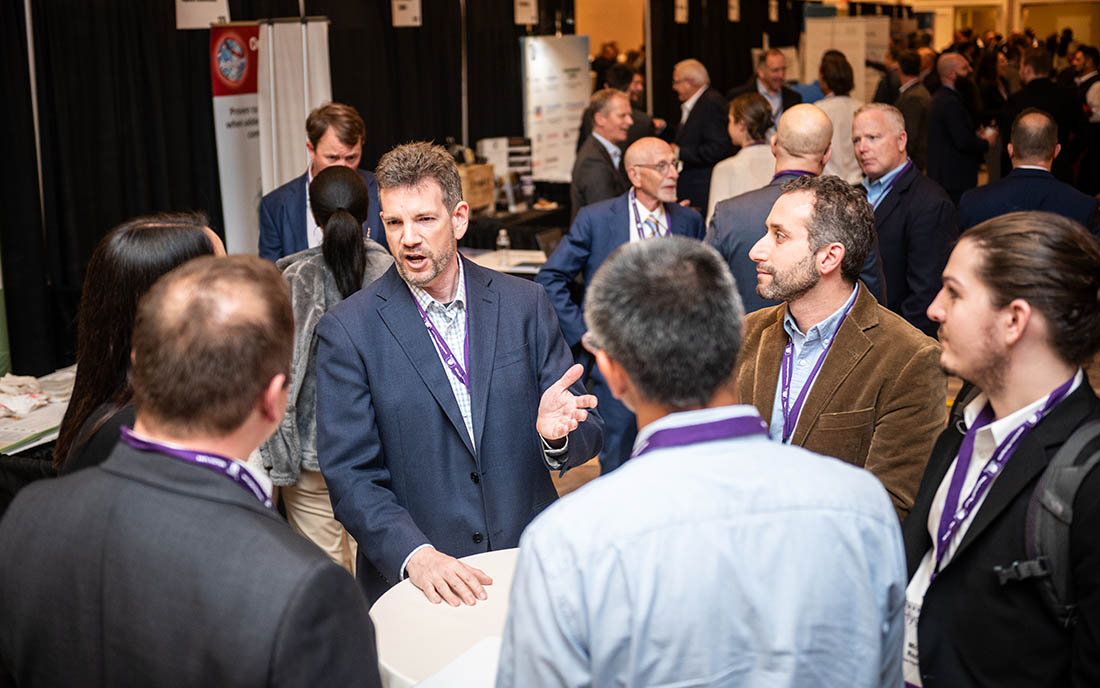Hygienix 2023, hosted by INDA, Association of the Nonwoven Fabrics Industry, brought professionals together to define sustainability movement challenges facing the industry. With close to 450 participants and 50 tabletop exhibits, the event focused on addressing key trends and statistics, redefining hygiene in a future economy and innovating brands for up-and-coming eco-conscious consumers. The energy
was amplified by lightning talks, award presentations, panels and keynotes.
Courtney Scharf, futurist and chief content officer of Trend Hunter Inc., kicked off with a keynote on AHP trends and forces at work that change the industry and reveal opportunities. The key takeaway is the prevalent technological acceleration in the consumer marketplace. There is a disruption of niche brands arising from innovators, like Dude Wipes. “Technology is an accelerant with changes on a week-by-week basis,” she said. “It is causing a rise in prosumerism – a better version of consumers. Consumers expect brands to be an educator as the average consumer becomes more sophisticated.” Access to more and more information is driving this desire for education.
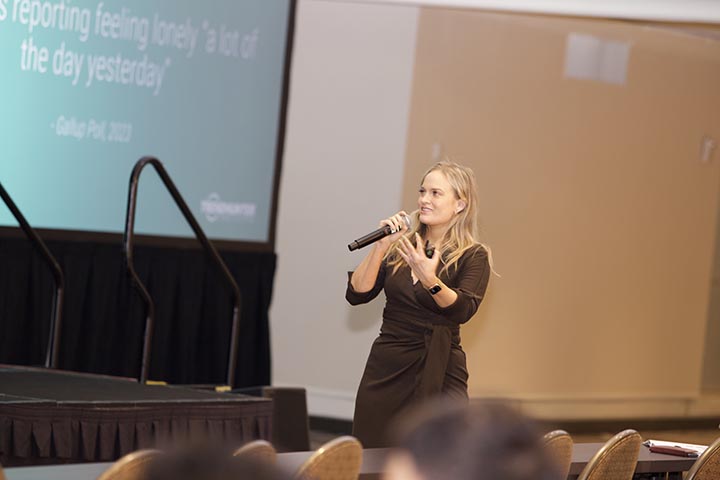
Trends that impact personal hygiene brands include the idea that people don’t buy products, they buy better versions of themselves. Along with this, there is an evident “wellness backlash,” as this industry is typecast as shame-driven, unscientific, overpriced, and exclusionary. She warns, “Your next competitor may come out of nowhere and are not even on your radar today.”
She cited UK flushable sanitary pad maker FLUUS, who advertise that their pad is the size of an eyelash once flushed into water ways. That powerful visual creates consumer trust because they can immediately gauge the end-of-life result. Products with special or limited editions also are gaining popularity because it confirms a notion that the brand is paying attention to the desires of its target market. Lastly, she noted that “smaller numbers of choices can translate to purchasing power; people do not always want so many choices, just good choices to choose from.”
Also speaking to trends, Ashish Chatterjee, from Innovategrn/Centrifuse, spoke on the accelerated consumer-centric approach to product marketing. “Why accelerate? Increasing demand boosts the consumer experience and empowers the underserved.” The way to do this, he suggests, is to leverage AI-curated technology to access the consumer directly and identify their compensating behaviors. AI can quickly identify solutions to consumer problems, with validated user interest, tangible cost savings from launching products consumers don’t want, and products to market first over competitors.
AI-based curation, by definition, uses algorithms to process huge volumes of data, deciphering meaning, and patterns. AI works by analyzing user data to make sense of user intent, thereby helping marketers address consumers better.
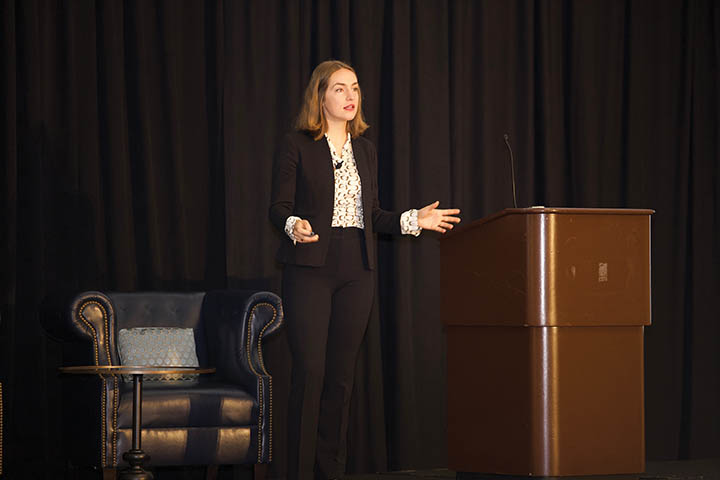
Sequel’s product developer and CEO/cofounder Greta Meyer spoke about their product success using the “listening to the consumer” approach. Sequel, founded by Meyer and Amanda Calabrese, is the prestigious 2023 Hygienix Innovation Award recipient. In Sequel’s case, the consumers who provided insight were their female college athlete peers. They all complained about traditional tampon design failures in their everyday sports life. By thinking outside the box, the product developing duo changed the traditional tampon design into a spiral shape for greater desired protection. They proved the concept and are currently bringing it to market with great success.
Christy Sapp, strategic feedstock sourcing director at Nexus Circular, addressed plastics circularity by promoting engagement to recycle plastic as feedstock in large quantities. Projected feedstock consumption needs from 2023 to 2025 will be growing exponentially. The development of feedstock sources for the advanced recycling is critical, and the limiting factor for industry growth. “As a critical tool for circularity, advanced recycling can close the circularity gap. Our process utilizes four types of used plastics as pyrolysis feedstocks, addressing 60% of global plastic waste: HDPE, LDPE, PP and PS. Recycled resins are a drop-in replacement, and perform just as virgin resins,” she says.
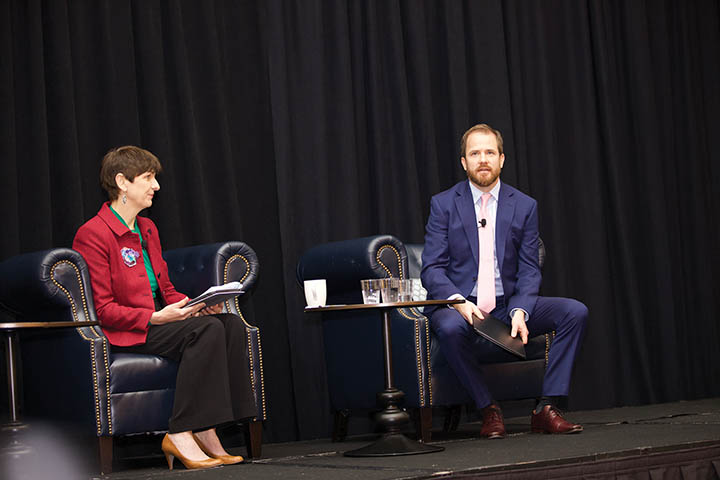
Colin Hanna from Price Hanna Consultants addressed the policy side of the sustainability strategy, showcasing a series of recycling and waste reduction trends, like diaper recycling, and mechanical and chemical recycling. Prudent industry players should “all be thinking how to make change come about in your companies – social change and system change.” Regulations will come to drive change, and it is wise to get ahead of the mandates. Sharing global initiatives as examples, he believes that best ideas will come when municipal policy (waste management), private commercial, and national policy all work together.
In another call to action, Heidi Beatty of Crown Abbey made the case for collaboration as necessary, particularly in circularity, for product development. For long-term success, supply chain collaboration can define what are proper solutions – from choosing raw materials, to manufacturing methods and ultimately end-of-life options.
INDA’s Matt O’Sickey continued that thought by discussing that the consumer’s desires for sustainability do not match what they are willing to pay. He shared that words and definitions matter, with a 2023 McKinsey & Company study that says products making ESG-related claims averaged 28 percent cumulative growth over the past five-year period, versus 20 percent growth for products that made no such claims. The industry is lacking a defined vocabulary with describing bioplastics, noting several studies and articles that confirm “consumers may mis-perceive bioplastics and base their decisions on their limited understanding.”
His call to action is also based in collaboration: There are many solutions for sustainability; consistency of language will be critical; and the nonwovens industry can and should act together in a
mutually supportive manner.
During the event, Jim Robinson was awarded INDA Lifetime Technical Achievement Award. Robinson has 33 years in the absorbent hygiene industry, including 28 years as a Technical Service Manager at BASF. He led technical teams that focused on the application of superabsorbent polymers (SAP) in hygiene products. Robinson has extensive knowledge of SAP applications, absorbent core formation, and hygiene article design, performance and testing. While with BASF, Robinson led efforts with multiple external companies to provide co-supplier solutions to hygiene converters.
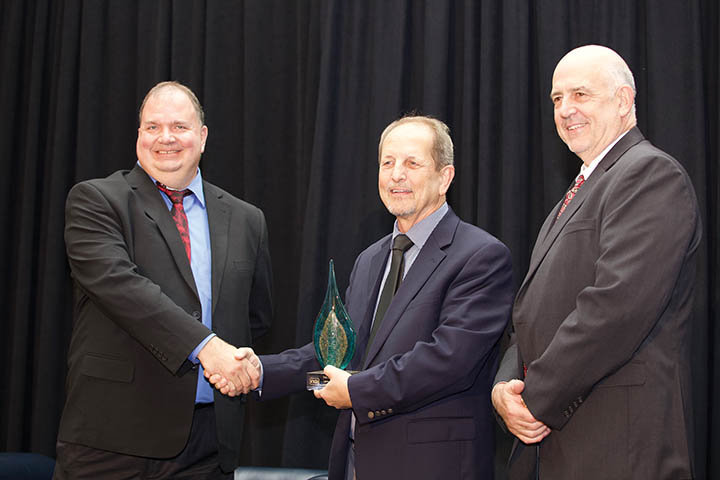
“I am humbled to be recognized on behalf of my industry colleagues with the honor of receiving the Lifetime Technical Achievement Award. Over my entire career I found the industry to be filled with opportunities to help people solve problems and to mutually share with them the technical understanding of our engineered products. I had fun many more days than not and, along the way, got to meet so many fine people and develop lasting, rewarding relationships,” he said.


